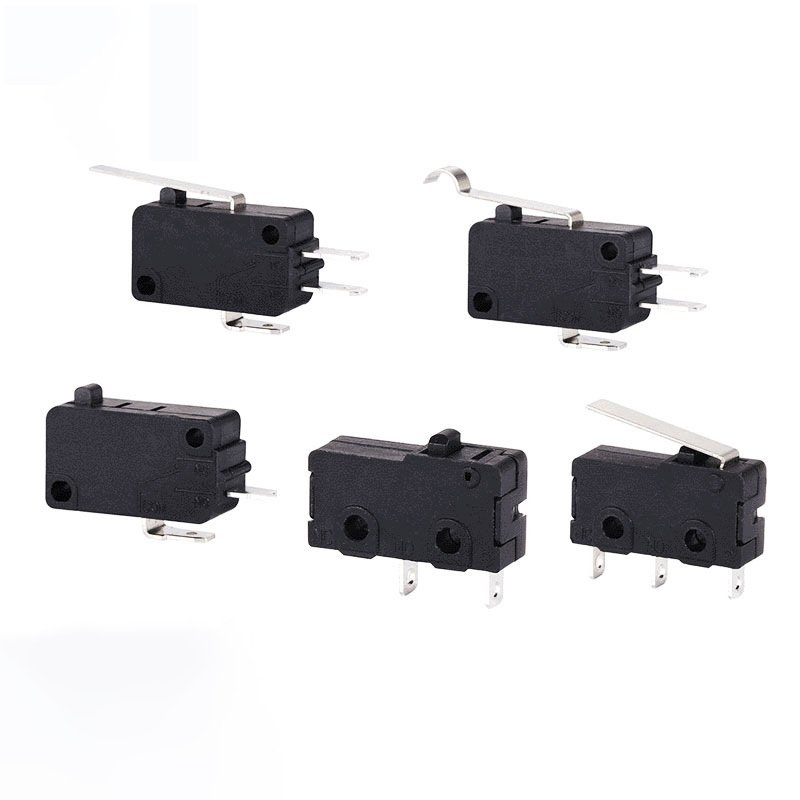
Column:News Release time:2024-12-20 Number of readers:557
Finding the right microswitch for your specific product or service involves considering several key factors that ensure compatibility, performance, and reliability. Here is a step-by-step guide to help you select the correct microswitch:
1. Define the Application Requirements
Functionality: Determine what you need the microswitch to do. For example, is it for detecting the position of a moving part, controlling a limit, or providing feedback for a process?
Load Requirements: Identify the current and voltage requirements that the switch must handle. Some microswitches are designed for low-voltage applications (e.g., 5V, 12V), while others can handle higher voltages (e.g., 24V, 120V, or 240V).
Mounting Style: Determine the type of mounting you need—whether it is panel-mount, surface-mount, or through-hole mounting.
2. Understand the Mechanical Characteristics
Actuation Type: Microswitches can have different actuation mechanisms:
Roller lever: Common for applications where the switch needs to detect motion at a distance.
Plain lever: used for simpler operations where space is more constrained.
Push-button: For manual actuation or triggering events.
Pin plungers: Common in applications requiring a direct push to activate.
Travel distance: Check how far the actuator needs to move to trigger the switch.Some operations bear a longer or shorter trip distance for accurate operation.

3. Electrical Specifications
Current Rating: Ensure the microswitch can handle the expected electrical current. A typical microswitch may have ratings like 1A, 5A, 10A, or even higher.
Voltage Rating: The switch should be rated for the voltage it will control. Many microswitches can work with both AC and DC circuits, but it is important to check the specific type (e.g., 250V AC, 30V DC).
Contact Type: Decide whether you need normally open (NO), normally closed (NC), or changeover (CO) contacts based on your circuit needs.
Durability: Some microswitches are rated for millions of actuations, while others are designed for lower cycles. Choose one with an appropriate lifespan.
4. Size and Form Factor
Physical dimensions: Check the space available for mounting the microswitch in your product. Microminiature or sub-miniature microswitches might be required for compact designs.
Switch Housing: Consider the material of the housing (e.g., plastic, metal) depending on durability and environmental conditions.
5. Compliance with Industry Standards
Certifications: Depending on the application, check if the microswitch needs to meet specific industry standards like UL, CE, RoHS, or IP ratings (for dust and water resistance).
Safety and Reliability: For critical applications, reliability and safety standards may be required, especially if it involves high voltage or safety systems.
6. Performance Requirements
Speed: Some microswitches are designed for high- speed operation, while others are pokily but more rugged.
Repeatability and Accuracy: The switch should actuate constantly at the specified point, especially in perfection operations.
7. Consult the Manufacturer's Documentation
Datasheets: Always review the manufacturer’s datasheet for detailed specifications, such as electrical ratings, mechanical life, operating temperature range, and more.
Application Notes: Some manufacturers provide guidance on selecting the right microswitch based on the application (e.g., for automotive, industrial, or consumer electronics).
8. Testing and Prototyping
Prototype testing: Before finalizing your choice, it is often best to test a few different microswitches in the actual application or in simulated conditions.
Manufacturer Support: Reach out to the manufacturer or distributor for advice, particularly if you have a unique application or unusual requirements.
9. Consult with Suppliers or Experts
Distributors: Companies like Digi-Key, Mouser, RS Components, or allied suppliers offer tools that let you filter microswitches by characteristics such as current rating, voltage, mounting type, etc.
Experts: If in doubt, consider speaking with a product engineer or consultant who specializes in switches and controls.
10. Cost and Availability
Budget: Consider the cost per unit and how much you need for your project. Prices can vary based on specifications and quantity.
Lead Time: Check the availability of the microswitch. Some specialized or custom switches may have longer lead times.
Summary of Key Factors to Consider:
Electrical: Current, voltage, and type of contacts (NO/NC)
Mechanical: Actuation type, travel distance, and mounting style
Environmental: Temperature, humidity, vibration, etc. Performance: Durability, repeatability, and lifespan
Certifications: UL, CE, ROHS, and other standards
Size: Ensure it fits within your product's space constraints.
By going through these steps, you should be able to select a microswitch that matches the specific needs of your product or service.